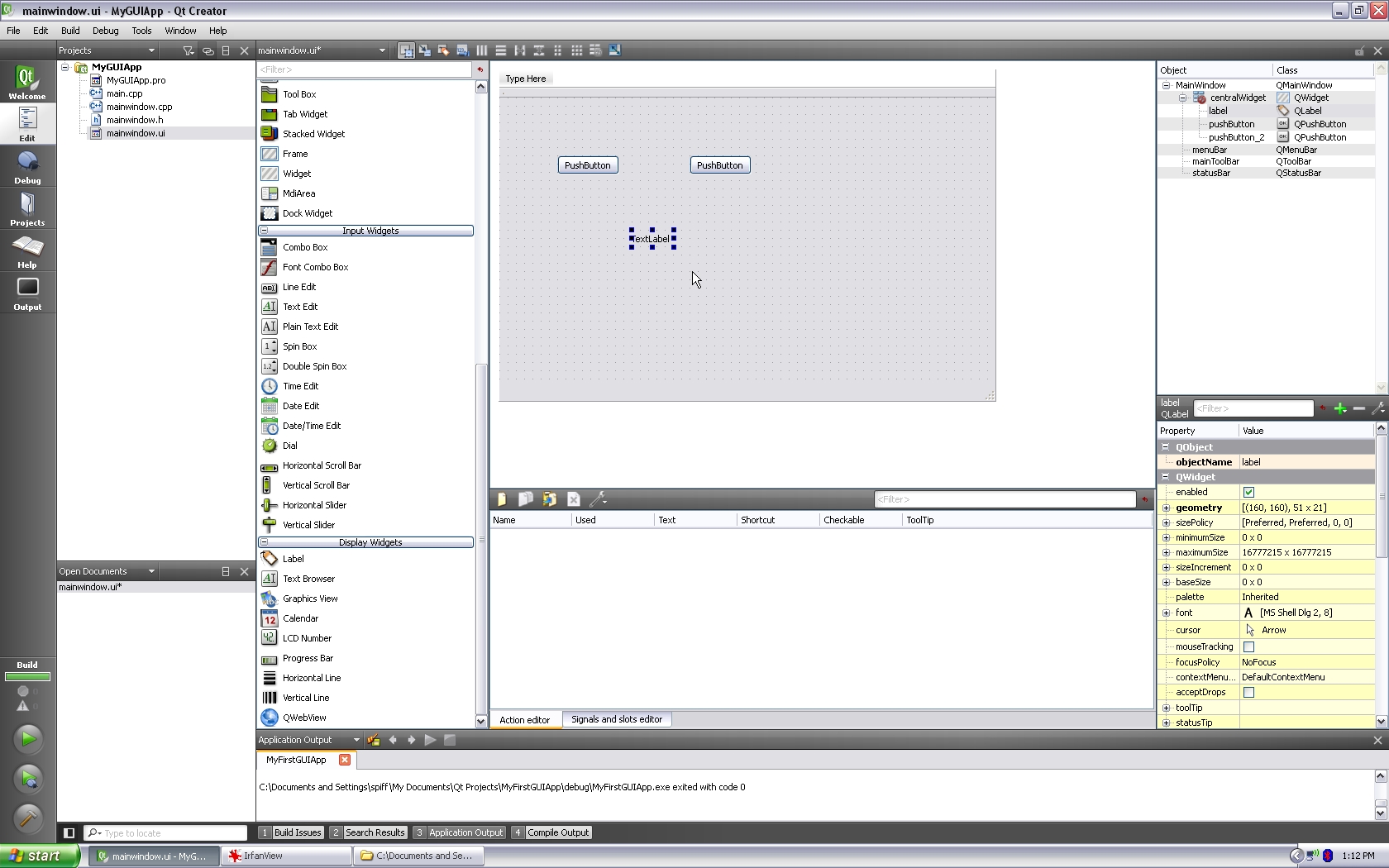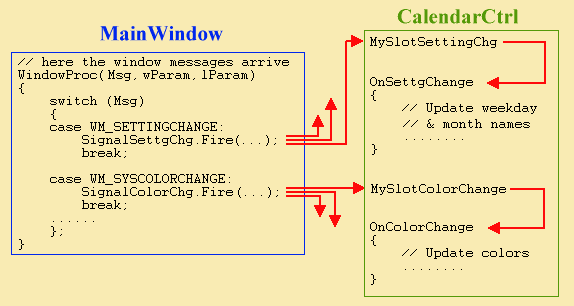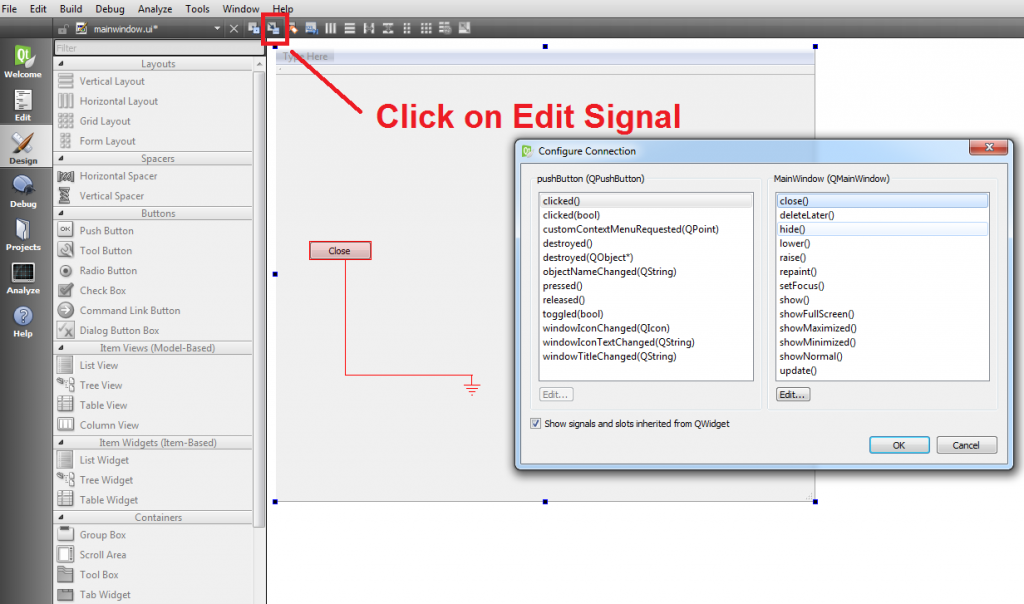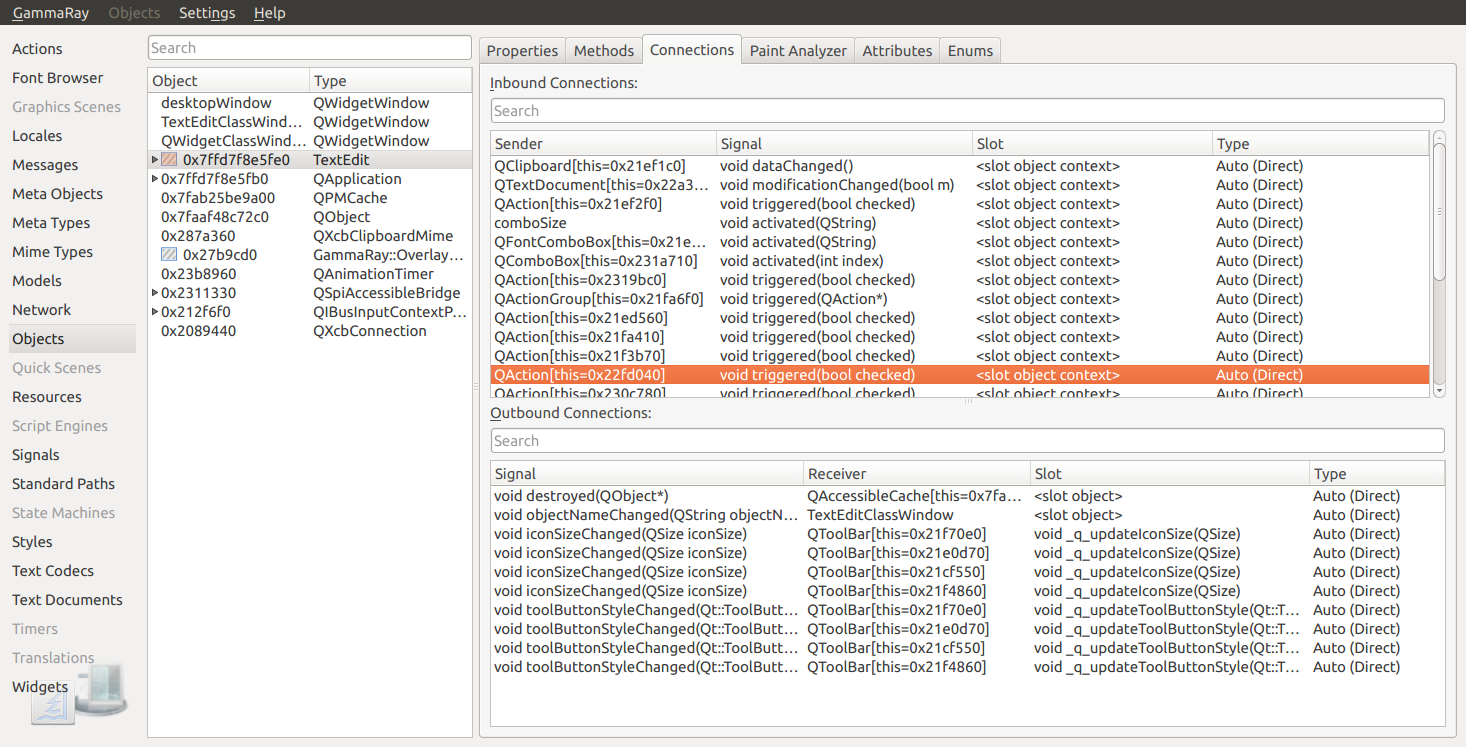Signal Slot In Qt
This is a powerful way to extend or modify the built-in signals provided by Qt. Intercepting the signal. Instead of connecting signal directly to the target function, you instead use an intermediate function to intercept the signal, modify the signal data and forward that on to your actual slot function.

I'm using Qt Creator 2.0.1 and I have a custom slot my QMainWindow. Now I have a pushbutton, which on clicked should call the custom slot on the main window. Can do in code yes, but can't do this with the signal-slot editor. When I open the signal-slot. In Qt, we have an alternative to the callback technique: We use signals and slots. A signal is emitted when a particular event occurs. Qt's widgets have many predefined signals, but we can always subclass widgets to add our own signals to them. A slot is a function that is called in response to a particular signal. PyQt5 - Signal and slot function The signal and slot operation are used to handle events and signals of the objects or widgets at the python app development level. It will also enable communication between some designed objects. The following steps are needed for creating a Python signal and slot operations.
I have a number of different signals connected to one slot. Is there any disconnect function that can be used to disconnect everything connected to a specific slot?
For example:
@QObject::connect(object1, SIGNAL(a()), receiver, SLOT(slot()));
QObject::connect(object2, SIGNAL(b()), receiver, SLOT(slot()));
QObject::connect(object3, SIGNAL(c()), receiver, SLOT(slot()));@
Now I want a function to disconnect all the signals from receiver’s slot(). There is an option:
@QObject::disconnect(receiver, SLOT(slot()));@
but this connects only the signals in the current object. I want to disconnect ALL signals, without knowing the objects that are connected to the slot.
Any ideas?
EnArBgDeElEsFaFiFrHiHuItJaKnKoMsNlPlPtRuSqThTrUkZh
- 2Signals
- 3Basic Usage
- 4Example
Overview

Using QPushButton developers can create and handle buttons. This class is easy to use and customize so it is among the most useful classes in Qt. In general the button displays text but an icon can also be displayed.
QPushButton inherits QAbstractButton which in turn inherits QWidget.
Signals
Inherited from QAbstractButton
- void clicked(bool checked = false)
- void pressed()
- void released()
- void toggled(bool checked)
Inherited from QWidget
- void customContextMenuRequested(const QPoint &pos)
Inherited from QObject
- void destroyed(QObject *obj = nullptr)
Basic Usage
Text
The text of QPushButton can be set upon creation or using setText(). To get the current text of the button use text().
Signal Slot In Qt 6
Icon
The icon of QPushButton can also be set upon creation. After creation the icon can be changed using setIcon() To get the current icon of the button use icon()
Signal Slot In Thread Qt
Set Position and Size
To set the position and the size of the button use setGeometry(). If you want just to modify the size of the button use resize()
Handle Button
QPushButton emits signals if an event occurs. To handle the button connect its appropriate signal to a slot:
connect(m_button, &QPushButton::released, this, &MainWindow::handleButton);
Example
The following simple code snippet shows how to create and use QPushButton. It has been tested on Qt Symbian Simulator.
An instance of QPushButton is created. Signal released() is connected to slot handleButton() which changes the text and the size of the button.
To build and run the example:
- Create an empty folder
- Create a file for each of the below code snippets and add the example code to them (the name of the file should match the name above the snippet).
- All 4 files must be in the same folder.
- Using command line, navigate into the folder with the 4 files.
- run qmake on the project file:
qmake PushButtonExample.pro- If successful it will not print any output.
- This should create a file with the name Makefile in the folder.
- Build the application:
make- The application should compile without any issues.
- Run the application:
./PushButtonExample

The above steps are for linux but can easily be followed on other systems by replacing make with the correct make call for the system.
mainwindow.h
